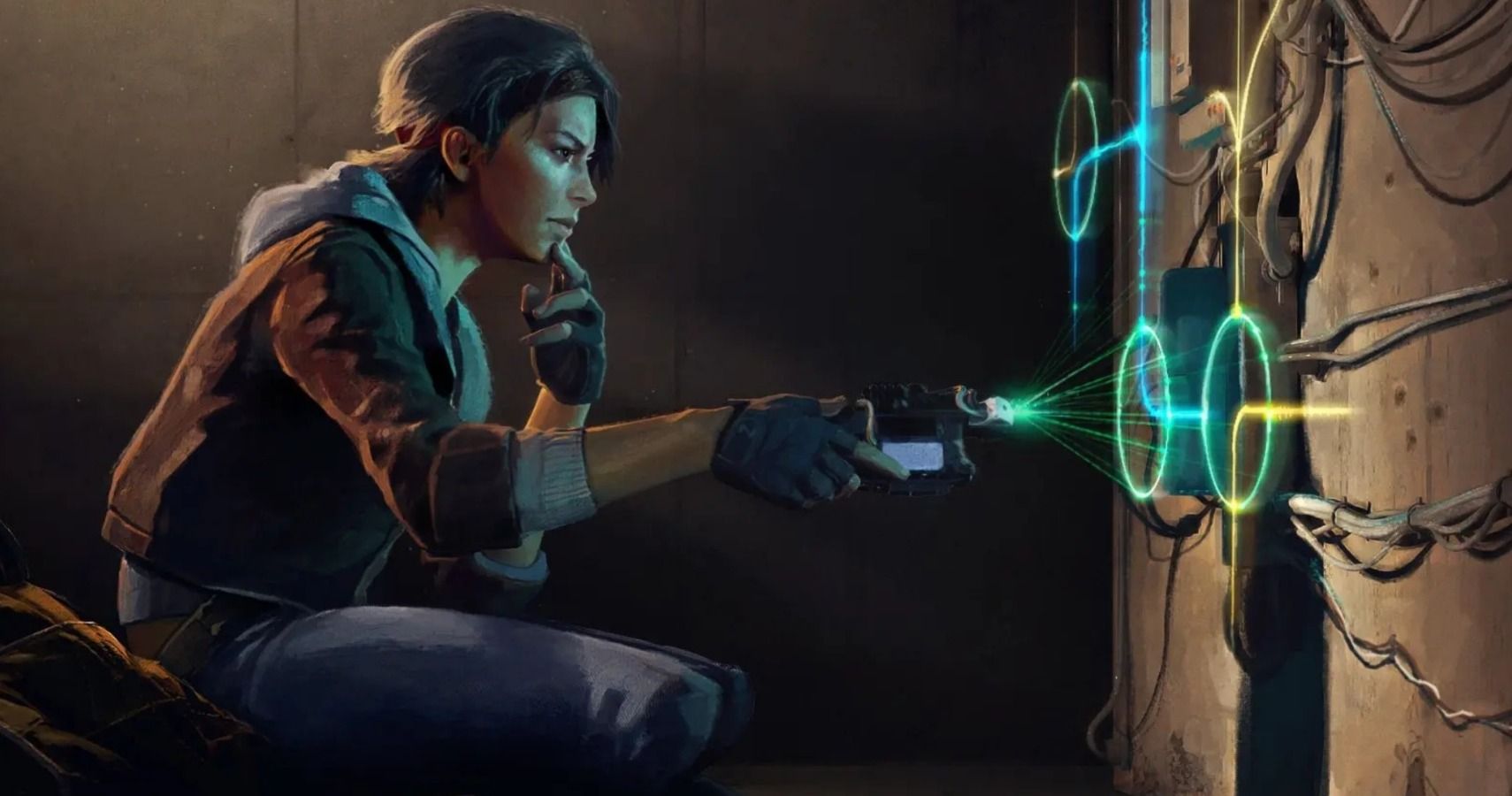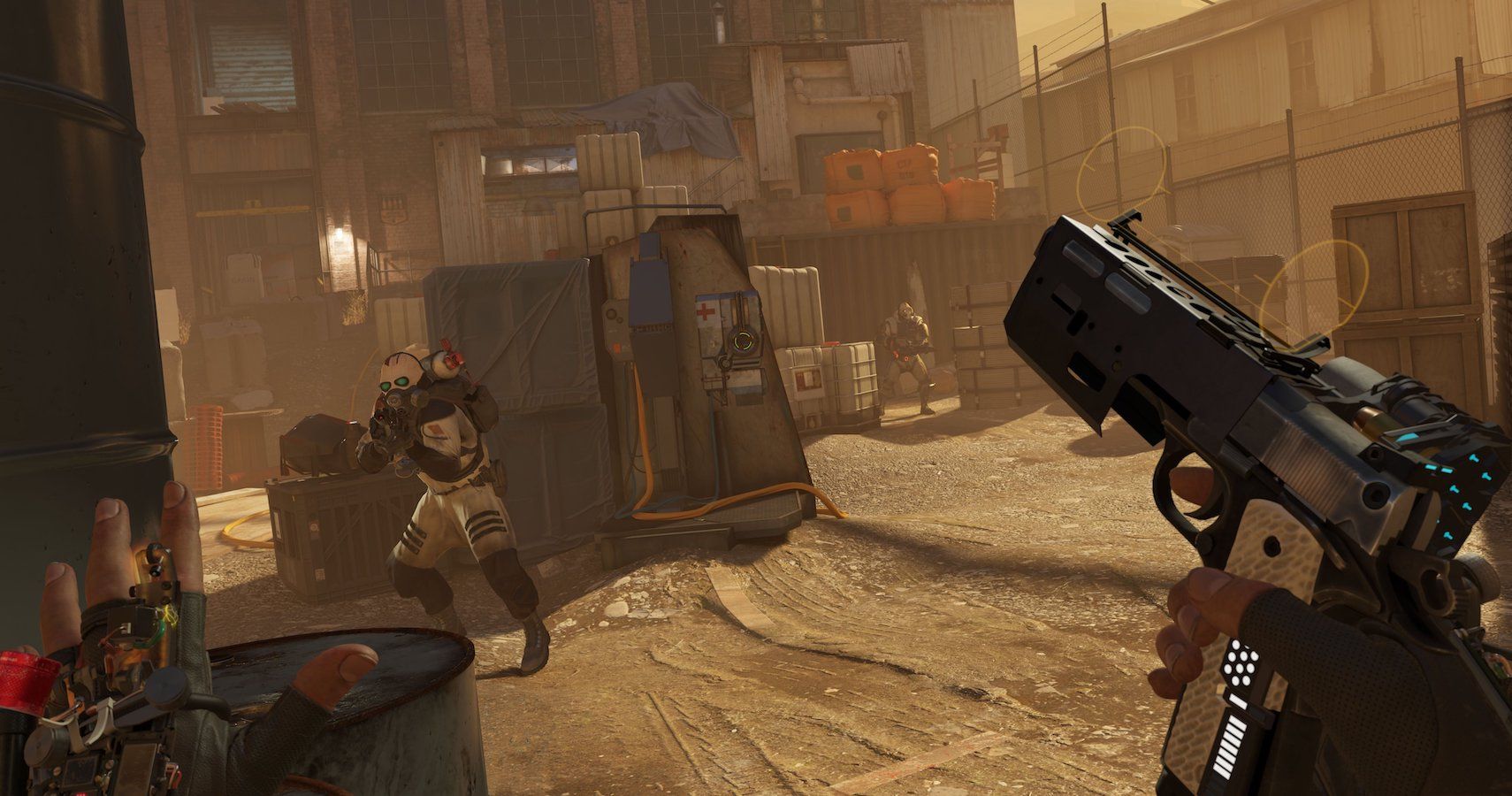Valve is the sort of studio that will only create new entries in its beloved franchises if they feel truly necessary. Each new project must be a step forward, a justified expansion that does something new in the medium instead of retreading old ground simply to advance a narrative cliffhanger. This is the philosophy that saw Half-Life abandoned for 13 long years, and this very same idea underpinned the masterful debut of Alyx in the realm of virtual reality. It is something that could only be achieved in this new space, whether we liked it or not.
I recently spoke to Rob Walker, project lead on Half-Life: Alyx, who had a huge hand in morphing it into an experience that would push the series forward, evolving the world of Gordon Freeman and company in so many monumental ways that it will never be the same again. Putting aside its groundbreaking ending, the fundamentals of Alyx are equally as striking. It’s the most realised game ever assembled in virtual reality, making City 17 feel like a living, breathing space that reacts to your every interaction.
This level of immersion is partly due to how Valve goes about making games. “You get an opportunity to work on pretty much everything, so I took that opportunity [to work on Half-Life] as much as I could,” Walker says. “The way we build Half-Life is just really fun. When you build multiplayer stuff the bulk of the work is all in service after release, and so you’ve got this torrent of information and you’re trying to parse it all to make changes to fix as much as you can internally. But there’s a disconnection with Half-Life.”
As you might expect, Half-Life: Alyx was developed in secrecy for years, with Valve gradually offering up small parts of the game to select numbers of testers before jumping back into the code to make adjustments. “We just bring people into the building one by one, and we put what we’ve got in front of them. We take a tonne of notes, work for a week, and bring in the next person,” Walker tells me. “So there’s this much tighter correlation at the design level between the changes you make and what you see. Personally, I’ve learned more about game design working on Half-Life than I have anything else because it’s just that type of connection. The problem space goes from worrying about the whole world to a much smaller space, like ‘how do we make this room more fun?’ and it’s almost like a game in itself. It’s like a big puzzle game to make Half-Life, so I really enjoyed getting into that mode again for a few years.”
After talking with Walker about the creation of Half-Life: Alyx and his excitement of returning to the saddle, I asked if this was an experience that could only be conceived in VR. “Yes!,” Walker says with a laugh. “One of the pieces of terminology we have at the design level is the budget of a player’s attention. In your game you can try to get your player to do whatever it is you want them to do, but if they’re not interested or [are] more interested in something else, you’re just gonna fight them on that.”
Engaging with environments in virtual reality is fundamentally different to traditional games. You can reach out and touch anything within the rendered world, so Valve played with this idea to ensure Alyx remained immersive at every possible turn. “One thing we noticed early on with Alyx, even back when we had nothing but Half-Life 2 textures on our prototype walls, players were exploring the world much more than they ever had in the past,” Walker explains. “This meant we had more of an [attention] budget, so we leaned heavily into that. It just became this cycle where we injected more and more interactivity into everything.”
However, this excessive cramming of the world came with trade-offs, and thus Valve needed a solution – this is when the Gravity Gloves were born. “Like the Gravity Gun in Half-Life 2, the Gravity Gloves are a central design element that end up touching all of the other systems,” Walker says. “Part of the reason why they’re so good is because they touch all those other systems. You can rely on them always having some form of interaction or role to play with almost everything in the game.”
Not only did the Gravity Gloves fit perfectly into the Half-Life universe, they also made the virtual reality aspect of Alyx far more palatable, solving issues that have plagued games in the medium for years. “It reduced the amount of teleportation you had to do because you can pick up three things without having to move,” Walker explains, still keenly aware of the limitations surrounding virtual reality despite everything Valve’s new outing has achieved.
The team at Valve remains steadfast in their vision, but is aware that “a lot of fear” surrounded the harsh truth that Half-Life: Alyx was a VR exclusive. “I think for the first couple of years, it was just a bunch of people in the company sceptical that we were going to actually build and release a Half-life product again,” Walker says. “All the scepticism about Valve working on Half-Life that’s out there was just as alive within the company itself, and you just resign yourself to thinking that we’re never going to do it.”
But it did, and now the future of Half-Life is brighter than ever, with Valve no longer wishing for fans to be stuck in narrative limbo. With a bit of luck, hopefully we’ll see many new games in the years to come.
Next: The World of Kingdom Hearts Mods Is A Beautiful Nightmare
- TheGamer Originals
- Valve
- vr
- Half-Life: Alyx
Jade King is one of the Features Editors for TheGamer. Previously head of gaming content over at Trusted Reviews, she can be found talking about games, anime and retweeting Catradora fanart @KonaYMA6.
Source: Read Full Article


